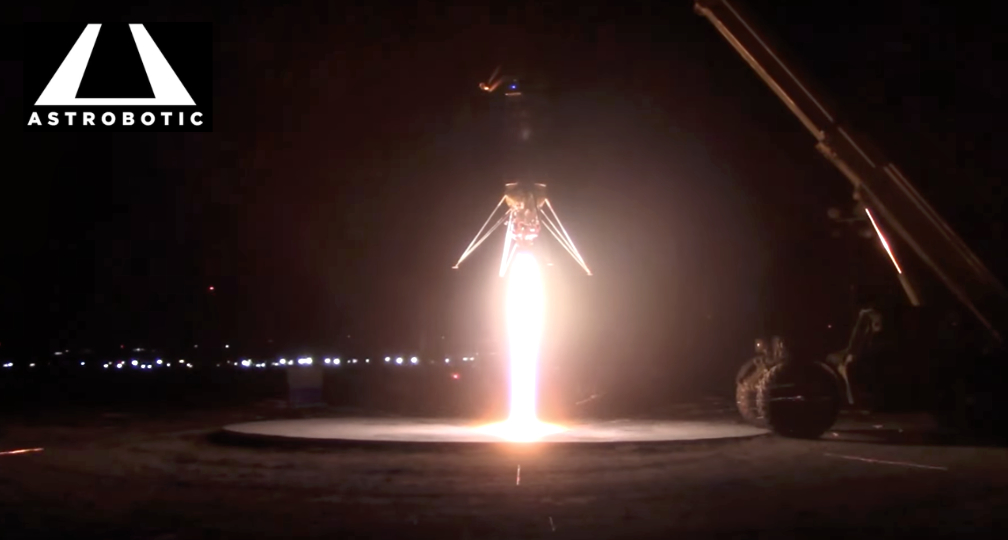
Astrobotic’s Propulsion and Test department flew Xodiac, a vertical-takeoff, vertical-landing (VTVL), reusable, terrestrial rocket for its first night flight.

The tethered night test prepared Xodiac for the upcoming flight testing with the NASA TechLeap Prize’s Nighttime Precision Landing Challenge, managed by NASA’s Flight Opportunities program.
TechLeap is designed to rapidly identify and develop technologies of interest to the agency using a series of challenges, and the Nighttime Precision Landing Challenge will test the ability of three winning payloads to map a lunar surface for navigation in near-total darkness.
Flight for TechLeap are slated to begin in April, continuing Xodiac’s flight heritage of more than 160 successful flights. The Nighttime Precision Landing Challenge flights will also mark the debut of Astrobotic’s Lunar Surface Proving Ground (LSPG), a high-fidelity, 3D test field that will mimic the topography and optical properties of the Moon’s surface. The size of two football fields, the LSPG will provide a unique simulated lunar topography to enhance the realism of payload flight tests aboard Xodiac.
The winning challenge teams—the Bronco Space Club at Cal Poly Pomona, Falcon ExoDynamics, Inc., and the University of South Florida Institute of Applied Engineering—have developed promising systems to detect hazards from an altitude of at least 250 meters and to process the data in real-time to help spacecraft land safely in the dark. Xodiac will provide these teams an opportunity to demonstrate their systems in a realistic night-flight environment aboard an actual rocket lander.
These TechLeap payload flights will be Xodiac’s first major flight campaign of 2024. Xodiac is also scheduled to fly campaigns this year for NASA’s TechRise Student Challenge, Draper, San Diego State University, and Astrobotic’s Robotics and Surface Systems department. The latter campaign will test Astrobotic’s novel hazard detection and avoidance system that will help guide its Griffin lander to a soft landing on the Moon’s south pole.

“We’ve been rigorous in our preparations for the TechLeap flights,” said David Masten, Chief Engineer for Astrobotic’s Propulsion & Test Department. “The teams will demonstrate their systems over the LSPG at night to simulate landing on the Moon during the lunar night or in shadowed craters.”
